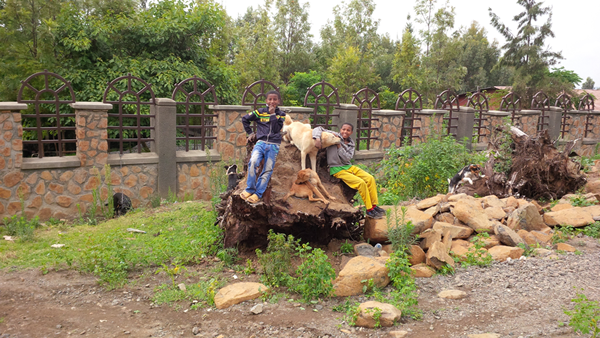Rabies is a disease that has no boundaries!
By Ally Sterman, OC Hubert Fellow, Ohio State University School of Veterinary Medicine

Two boys wait with their dogs at a local canine rabies vaccination clinic in Ethiopia. Many who attended the free clinic walked miles and waited hours to have their pets protected from rabies. Ethiopia has reported some of the highest rates of human rabies deaths in the world. Recent collaborations with the Ethiopian government, Gondar University, Ohio State University, and CDC are working to put an end to canine rabies in Ethiopia. (Photo by Ryan M. Wallace, CDC)
As part of an Ethiopian rabies project sponsored by Ohio State University, I traveled and interviewed local residents in towns and villages about their general knowledge of this disease. Many had seen rabid dogs, known individuals who were bitten, and even had family members who died from it.
“Be warned: these dogs won’t look like what you expect!”
This is a comment I have heard and said frequently in the past four years. As a veterinary student, I have traveled abroad to many Third World countries to work with animals and focus on rabies. Dogs in these countries are much like ours. They are loved and have names, homes, and owners who care. These dogs, however, are often very thin having internal and/or external parasites and/or wounds with maggots. Their owners are willing to wait all day for their animals to be seen, vaccinated for rabies, and maybe even get surgery.
“Rabies vaccinations are very important!”
On my most recent trip to Ethiopia, two boys, under the age of 12, brought three dogs to be vaccinated against rabies. They came to our clinic at 7 AM and waited patiently, missing lunch and both tea breaks, until their dogs were finally done at 6 PM. These boys were not the only ones. During our six-day clinic, we had a mass of locals waiting for us before we arrived each morning. Many had walked miles and miles to bring their animals. These owners recognized the need for veterinary care but even more, the importance of a rabies vaccination for their dogs!